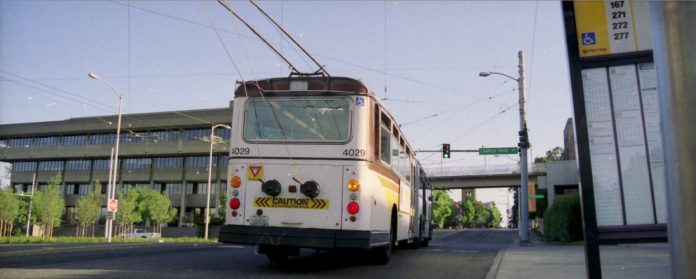After receiving an enormous amount of responses in a variety of places regarding the subject matter of a certain recent post, I wanted to add a few items I feel are worth concretizing in a follow-up entry.
1) The best outcome of all of this would be everyone’s voice being heard and taken seriously. I’ve enjoyed hearing feedback from those who agree and those who disagree, and most of all from those who recognize the problem is thorny and complex, and that any viable solution would be best if it was actually a collection of solutions, all of which respected the variety of voices and interests involved.
2) I’ve said this elsewhere, but it bears repeating: my biggest role models are other compassionate bus drivers. I’m thinking particularly of certain of my female night operator colleagues who own their deescalation tactics with humble pride and ease of skill, and from whom I continue to learn from. I don’t think it’s a wild presumption to guess the reason my female friends tend to be better at this type of deescalation might have something to do with the avalanche of bull they have to tolerate in workplaces and elsewhere. Deescalation training, even if self-taught, gives you a lot less headaches in the long run than gettin’ physical.
3) A tip, as my colleague and friend Abdi once reminded me: “You cannot act tough. If you act tough, they will act tough. And they’ve got nothing to lose. They don’t care about going to jail, they have already been there many times. What could possibly go wrong for them? They don’t have anything.” You who are on the job, on the other hand, have a lot to lose. Gotta be clever– or as I like to call it, respectful. Loving. Endlessly patient.
4) What we’re really talking about here is the mental health problem in Seattle. The Homelesness Crisis is really the Mental Health Crisis. If I’m being reductive in saying so, I’ll hazard the supposition that the statement is more true than untrue. Third and James, Third and Pine, Second and Washington… these places are not scary because they have homeless people in them. They’re scary because of the amount of mental instability.
And the Mental Health Crisis isn’t Metro’s problem. It’s the city’s.
Solving the question of safety on buses is an issue that risks a narrowness of perspective that’ll result only in band-aid solutions. It isn’t safety on buses that’s at the root of things here. It’s safety in the city at large. In public spaces. The southeast corner of Third and Pine and southwest corner of Third and Pike are what the City of Seattle allows to continue every day. The condition of Seattle’s citizens there and elsewhere must be considered, on some level, as condoned by the city. Appropriate enough to allow to continue.
It’s a decision noticed on the world stage, as the positioning of the Market and Westlake dictate that nearly all our tourists walk through there. This is how this city treats its population. Luxury housing, cranes, and… this. Now that’s a problem to look at, and any entity pressuring Metro to do something about it, rather than the city or another cash-flush operation in a position of power (cough Amazon cough) ought to be ashamed of their misdirection.
Homelessness isn’t a bus driver’s problem to solve, but the city doesn’t have the resources to fix it right now, and thus we operators end up shouldering that unanswered load by carting around sleepers every night. Seattle’s not housing these guys, so we’ll do it in the meantime. That’s what I remind myself. It’s what has to work for now. But Metro shouldn’t be looked to as the entity to blame on these issues. I’m not qualified to offer solutions, but ramping up into a barricaded police state isn’t the answer, and nor is bumping everyone down to the next block.
Thanks for reading!
Nathan Vass is an artist, filmmaker, photographer, and author by day, and a Metro bus driver by night, where his community-building work has been showcased on TED, NPR, The Seattle Times, KING 5 and landed him a spot on Seattle Magazine’s 2018 list of the 35 Most Influential People in Seattle. He has shown in over forty photography shows is also the director of nine films, six of which have shown at festivals, and one of which premiered at Henry Art Gallery. His book, The Lines That Make Us, is a Seattle bestseller and 2019 WA State Book Awards finalist.


